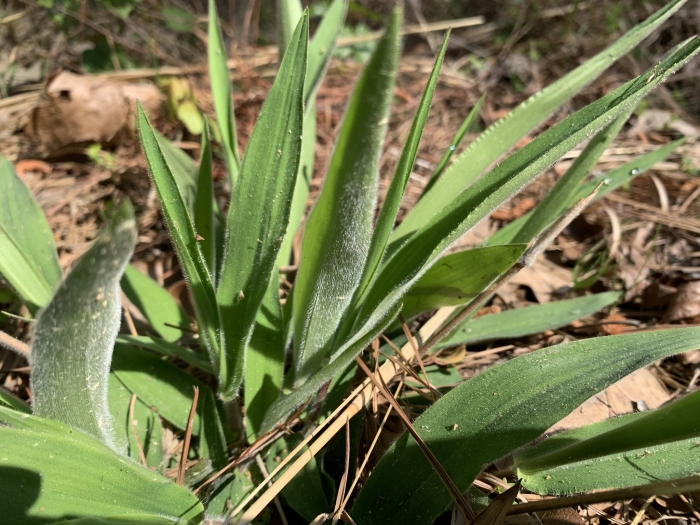Velvet Panicum
(Dichanthelium scoparium)
Velvet Panicum (Dichanthelium scoparium)
/
/

© Ashwin Srinivasan
CC BY 4.0
Image By:
© Ashwin Srinivasan
Recorded By:
Copyright:
CC BY 4.0
Copyright Notice:
Photo by: © Ashwin Srinivasan | License Type: CC BY 4.0 | License URL: http://creativecommons.org/licenses/by/4.0/ | Uploader: ash2016 | Publisher: iNaturalist |















Estimated Native Range
Summary
Dichanthelium scoparium, commonly known as velvet panicum or broom panicgrass, is a rhizomatous perennial grass native to pine barrens, open woodlands, savannas, and disturbed habitats in the southeastern United States and the West Indies. It forms a basal rosette of leaves during the fall and winter, and in the spring, erect stems can reach up to 5 feet tall. The plant is characterized by 7 to 11 hairy leaves on each stem, which can be up to 8 inches long. Velvet panicum is notable for its two types of inflorescences: a main panicle with open, wind-pollinated flowers and later in the season, cleistogamous flowers that self-fertilize, ensuring reproduction even in the absence of pollinators. The plant is capable of producing about 380,000 seeds per pound, which contributes to its successful colonization of open areas.
Velvet panicum is valued for its adaptability to a range of soil conditions and its ability to thrive in both full sun and partial shade. It is often used in restoration projects and naturalized areas due to its ecological role in supporting wildlife and stabilizing soil. While it is not commonly used in ornamental horticulture, it can be an interesting addition to native plant gardens or meadowscapes. Gardeners should note that it prefers well-drained soils and moderate water, and it can spread through its rhizomes, potentially becoming aggressive in garden settings.CC BY-SA 4.0
Velvet panicum is valued for its adaptability to a range of soil conditions and its ability to thrive in both full sun and partial shade. It is often used in restoration projects and naturalized areas due to its ecological role in supporting wildlife and stabilizing soil. While it is not commonly used in ornamental horticulture, it can be an interesting addition to native plant gardens or meadowscapes. Gardeners should note that it prefers well-drained soils and moderate water, and it can spread through its rhizomes, potentially becoming aggressive in garden settings.CC BY-SA 4.0
Plant Description
- Plant Type: Grass
- Height: 0.5-1.5 feet
- Width: 0.5-1 feet
- Growth Rate: Moderate, Rapid
- Flower Color: N/A
- Flowering Season: Spring, Summer, Fall
- Leaf Retention: Deciduous
Growth Requirements
- Sun: Full Sun, Part Shade
- Water: Medium
- Drainage: Fast, Medium
Common Uses
Erosion Control, Low Maintenance
Natural Habitat
Native to pine barrens, open woodlands, savannas, and disturbed habitats
Other Names
Common Names: Velvety Panic Grass, Velvet Rosette Grass
Scientific Names: , Dichanthelium scoparium, Chasea pubescens, Panicum debile, Panicum debile, Panicum elliotii, Panicum elliotii, Panicum fimbriatum, Panicum fimbriatum, Panicum laxiflorum var. pubescens
GBIF Accepted Name: